MATTERS OF OBSESSION
The racialised reality of photography: ‘Past Present Currents’ at Cape Town’s AVA Gallery
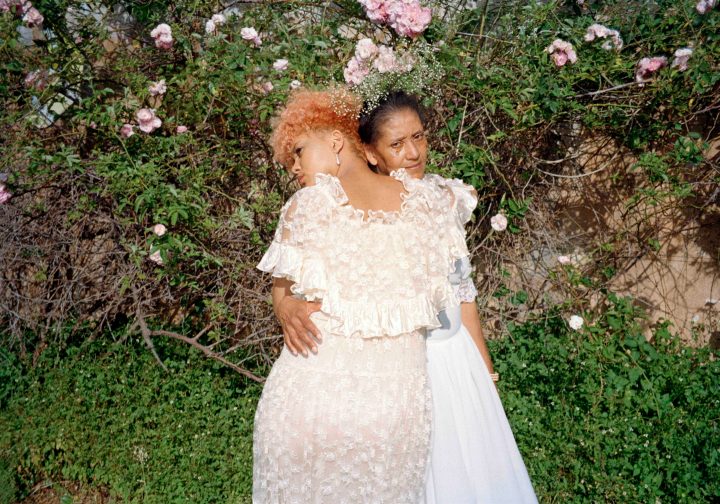
The Association for Visual Arts Gallery’s latest exhibition explores the deeply ingrained biases of the photographic art form through the subversive work of five contemporary photographers, who aim to unravel the medium’s racialised past.
From its very inception, the practice of photography has been imbued with racialised prejudices and biases; to accept this as a fact is imperative in understanding the work that photographers of colour, such as those included in Past Present Currents, an exhibition that opened at Cape Town’s Association for Visual Arts Gallery gallery in mid-April (closing at the end of May), do to reappropriate and subvert the photographic medium.
Before photography, image making was largely done by artists who would draw or paint what they saw. While some were extremely skilled at lifelike renderings, the invention of photography captured life in unprecedented accuracy.
Encyclopedia Britannica put it like this: Photographs work in a way that the “essential elements of the image are usually established immediately at the time of exposure. This characteristic is unique to photography and sets it apart from other ways of picture making. The seemingly automatic recording of an image by photography has given the process a sense of authenticity shared by no other picture-making technique.”
When we think of photographs we think of real life. The subjects in the picture must have lived and the event must have happened for the image to exist at all. Britannica continues: “The photograph possesses, in the popular mind, such apparent accuracy that the adage ‘the camera does not lie’ has become an accepted, if erroneous, cliché.”
Now more than ever we know that photographs can be manipulated, that the photographer has a far larger role in what the photograph depicts (connotatively and denotatively) than simply capturing real life. However, we still hold on to the idea that photographs tell a “truth” of some kind.
Which brings us to the crux of the conceptual work behind Past Present Currents, put together by Re-Curators, a curatorial collective established by Amogelang Maledu, Luvuyo Equiano Nyawose, and Thembakazi Matroshe.
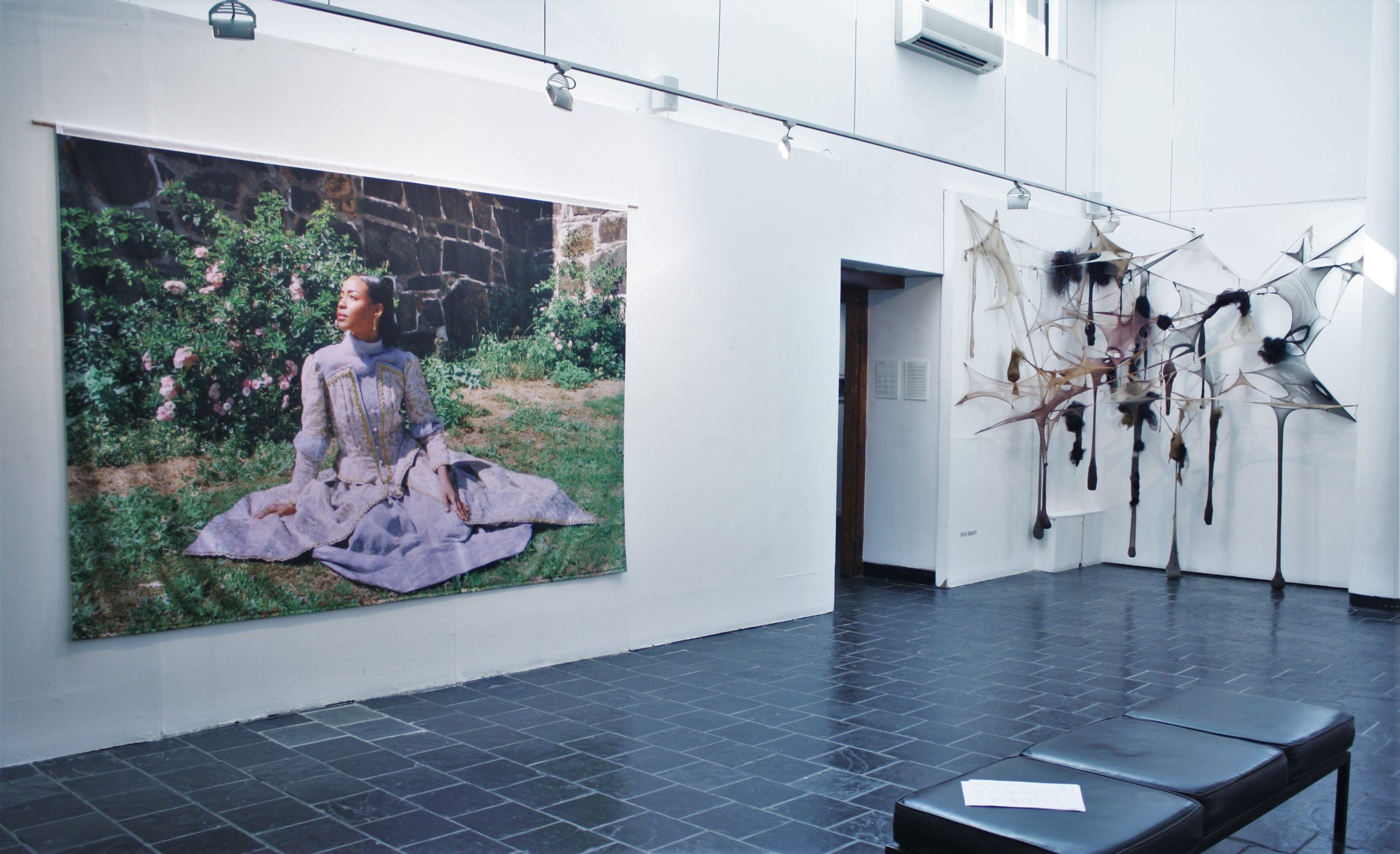
Past Present Currents at AVA. Picture by Shakes Nqaba Mbolekwana
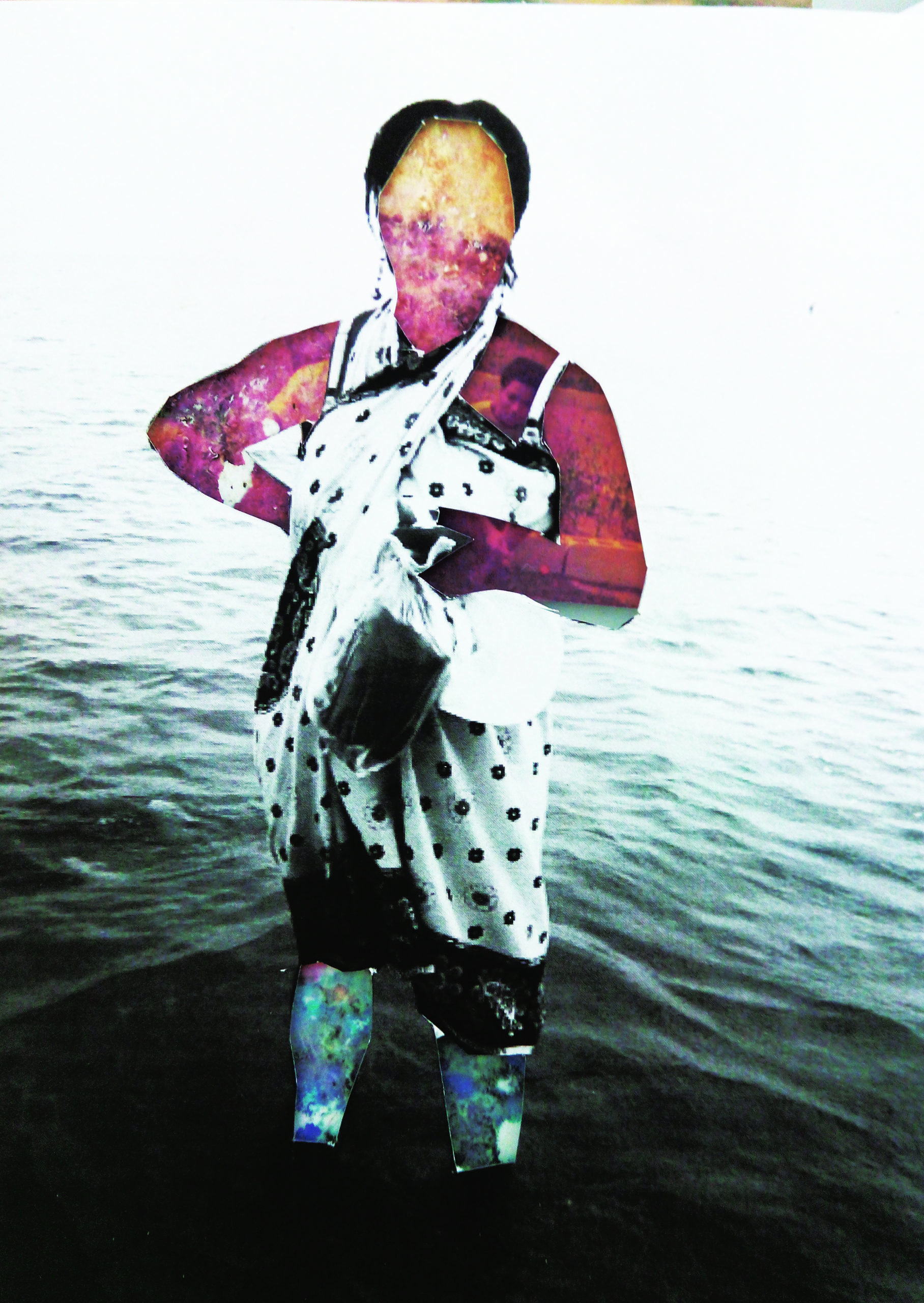
Vanessa Tembane ‘Corpos de agua’ Artwork image courtesy of the artist.
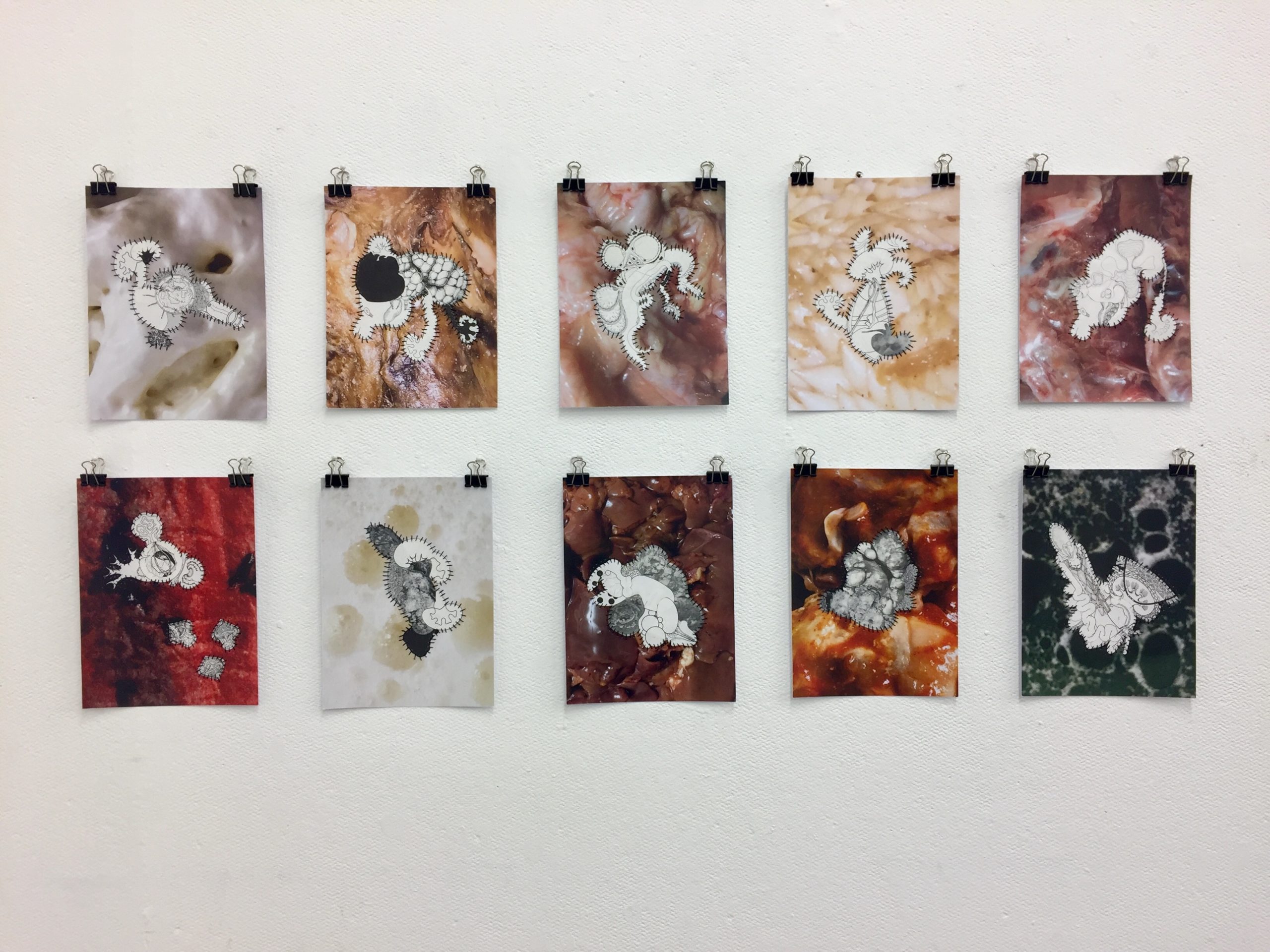
Yonela Doda. ‘Parasite Series’ Artwork image courtesy of the artist.
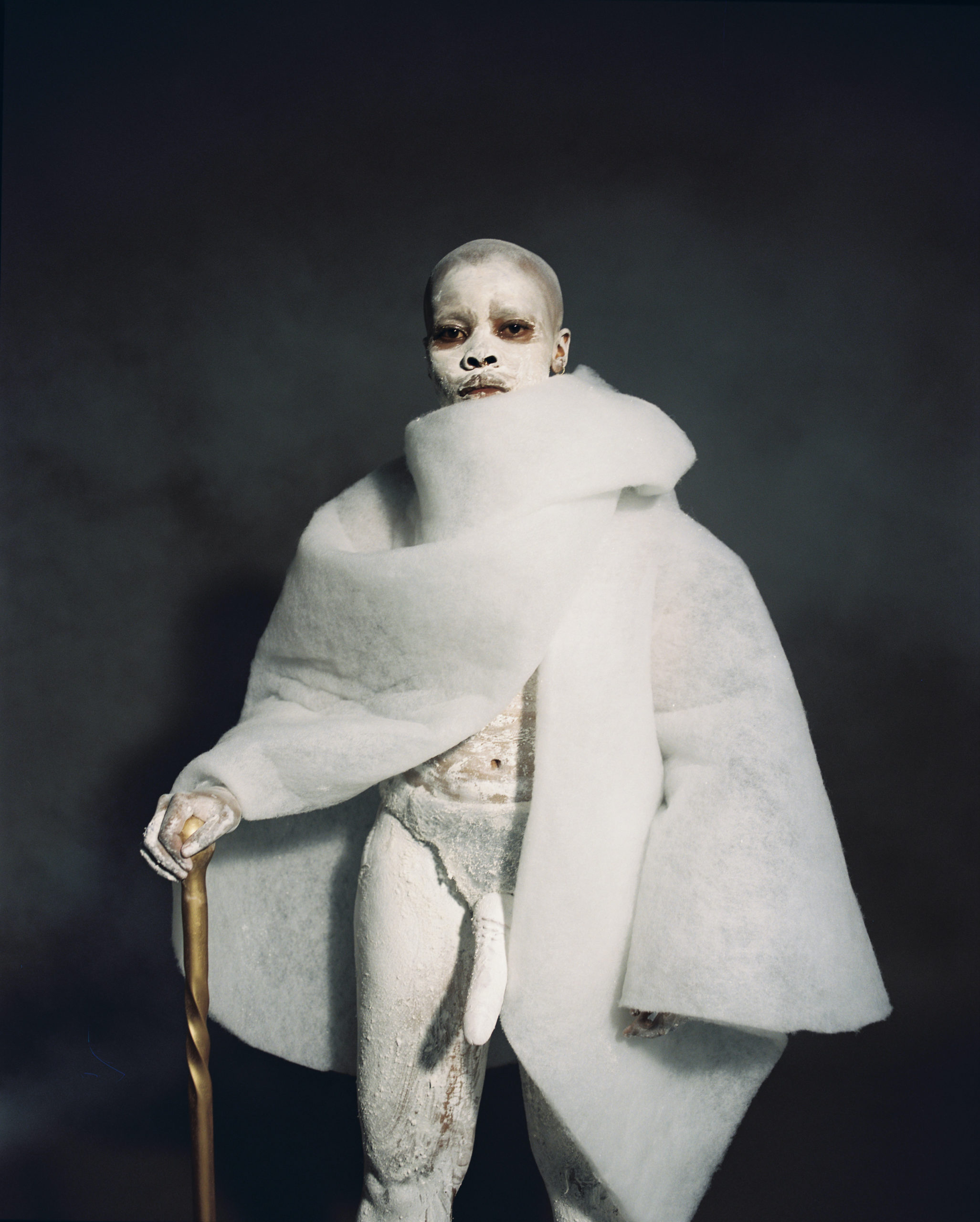
Yonela Makoba ‘Yintoni Indoda’ Artwork image courtesy of the artist.
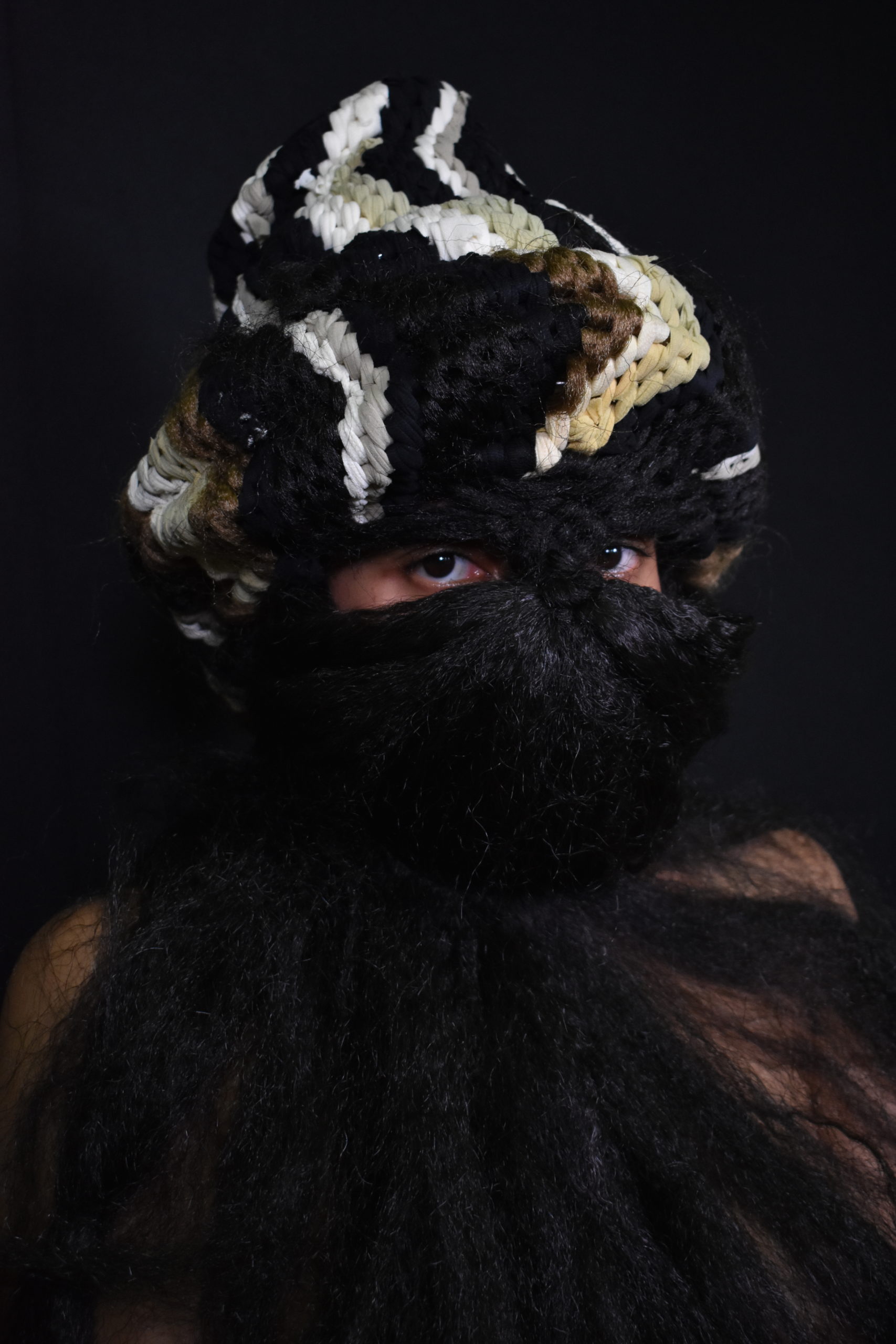
Kim Karabo Makin, Molenza ‘Urine Trail of the Bull’. Artwork image courtesy of the artist.
The exhibition overview text pasted on the wall at the entrance to the gallery reads, “light skin has been the chemical baseline for film technology. This illustrates how racism was inherently built into the medium.”
The statement echoes an article in the New York Times by Sarah Lewis, a Harvard professor, who details the inception of colour and light technology in film photography. According to Lewis, when Kodak lab technicians first began to develop film, they would use a Shirley card to help them calibrate shadows, skin tone and light during the printing process. The Shirley card was a 10x15cm photograph of a (very) white woman with brown hair and blue eyes, wearing a white gown and black gloves. Kodak in the 1950s was the leading photography company in the US and sold and printed almost the entirety of America’s photographs at the time. It’s no wonder that the Shirley card became ubiquitous, the standard calibration measure for lab technicians nationwide.
This means that the chemical composition of film was initially developed to capture white skin. The printing process was done in such a way that white features looked good and came out accurately. Film, on a molecular level, was developed for white people. When subjects of colour were caught on camera, their features and skin colors were washed out, or not captured at all. The darker the skin of the subject, the more invisible.
If we think back to the adage, “the camera does not lie”, the importance of this injustice is blatant. At the very birth of photography, people of colour and their experiences were outrageously devalued.
Re-Curators point out in Past Present Currents that Kodak did begin to “rectify these issues” in the 1960s and 70s. In the mid-90s they created a “Shirley” card that included a Black and Asian woman, and in the 80s developed a film that, according to their advertising, could “photograph the details of a dark horse in low light” (an unfortunate euphemism for people of colour.) Tragically, these changes were initiated only after the company was put under pressure by clients selling chocolate and furniture, who complained that the film and printing did a disservice to their products by not capturing the range of brown tones.
“It is quite bizarre that the technology of photography was improved for advertising purposes, instead of actual Black and Brown people”, reads the exhibition text, in an understatement of the century. The history of colonialism and slavery are indisputable proof that bodies of colour have long been dehumanised, commodified, exploited, etc. It checks out that the tragic devaluing of black and brown life in lieu of capital gain would reflect in the photographic medium.
For those of us thinking that perhaps these are all problems of the past, and that things are much better now, let us not forget 2020’s Vogue debacle where world-renowned gymnast Simone Biles was photographed by equally famous Annie Leibovitz, who was blamed for failing to balance and light Biles’s dark skin. As Lewis put it, “digital technology will still struggle with darker skin”. It takes a lot of “special corrective care”, like colour corrections, moisturisers and special lighting. While this in itself is indicative of a larger problem, Vogue’s failure to hire a black photographer who would have been better qualified was a misstep that did not go unnoticed.
Further, as The New York Times article and the Past Present Currents exhibition plaque points out, facial recognition software, which is used now in a variety of situations, from airport passenger screening, law enforcement surveillance and employment and housing decisions, to opening one’s iPhone, is rife with racial biases.
A study in 2018 titled “Gender Shades” uncovered that facial recognition algorithms had error rates that were 34% higher for black females than for white men. What’s more, law enforcement uses of this technology are ultimately skewed because of the racialised history of policing in America – black and brown faces are overrepresented (and underrecognised) in mugshot databases. This is a particularly scary thought in light of the recent global Black Lives Matter protests, which were highly documented by law enforcement worldwide. There have been rumblings that records of protesters’ faces might be added to facial recognition databases.
And so, the wretched past lives on in the present. It’s within this context that the photographers included in Past Present Currents assert their kaleidoscopic experiences.
Jody Brand, Kim Makin, Vanessa Tembane, Yonela Doda and Yonela Makoba, the artists included in the exhibition, are united in their presentation of African, femme, queer perspectives. That said, they are exquisite in their variety, each bringing a new layer, a different aspect to the meaning of being a femme person of colour in South Africa.
Brand, from Cape Town, celebrates queer bodies in historical spaces of trauma. Makin, born in Gaborone, Botswana, constructs an installation of ripped stockings and hair as a comment on legacies of racial categorisation during apartheid. Tembane, of Mozambican heritage, constructs memories from old photographs and fabric, commenting on her diasporic identity. Doda stitches collages together in pathological images that ruminate on pain, healing, sexuality and intimacy. And Makoba, originally from the Eastern Cape, places their own queer black body in context with a Japanese dance, Butoh, in a transnational comment on gender, power and eroticism.
The thread that ties these works together is the shared acknowledgement of marginalised experience in a South African context. Whether foreign, queer or a victim of violence, all of these artists are on the outskirts of South African hegemonic experience, yet they are all different versions of powerful femme, African artists. It’s a pity that this one linking experience is overlooked and overshadowed by the exhibition overview text (the only text in the entire exhibition), which focuses almost exclusively on an American perspective of the historical biases embedded in the photographic process.
We haven’t even begun to think about the sordid uses and implications of photography in the (post)colonies, let alone South Africa.
Throughout Africa during colonial times, the camera was used as a tool in racist pseudoscience in attempts to “prove” European superiority (African inferiority) through capturing physical differences between races. Photographs were a central part of “armchair anthropology” in which European scholars would frame the subjects of their studies as “savages” and “barbarians”. To quote Zimbabwean novelist Yvonne Vera: “In Africa, as in most parts of the dispossessed, the camera arrives as part of the colonial paraphernalia, together with the gun and the Bible.”
We still see damaging and undignified images of African people used as ploys to pry funding and support from European and American aid givers. Pictures of dilapidated African cities that, while partially accurate, do not provide a full or fair representation. This is its own kind of dehumanising.
In contrast, Brand’s gorgeous images, of which there was, regrettably, only one on display in the physical exhibition at the AVA gallery, are set in historical spaces of trauma. That is, historical South African spaces of trauma. The queer and femme subjects of colour Brand photographs are magnificent in these spaces; they are surrounded by flowers; they hold one another in warm embraces. They are reappropriating these places of past violence as spaces of resilience and celebration.
A quote from a page on the Stevenson Gallery website about Brand’s work reads: “Brand imbues her images with the divinity of religious totems, the grandeur of aristocratic insignia and the ubiquity of pop culture, suggesting contemporary icons for marginalised narratives.” And later, “she disrupts homogenous tropes of victimhood and trauma around the lives of femme individuals who exist outside of the centres of power”.
Brand is shifting the centre. Her subjects bask in the glory of their beauty and their celebration, and they do so despite (perhaps because of) the historical pain of their past. “May my enemies live long so they can see me progress” is the title of Brand’s work (and the lyric to a Die Antwoord song) included in Past Present Currents.
In her exploration of what it means to be a black woman of Mozambican descent in South Africa, especially in light of South Africa’s continuing issue with xenophobia, Tembane creates new memories from old photographs and stories told to her by her Mozambican mother. She treads on the thin line between fact and fiction, questioning the “authenticity” of both photographs and her own memory. She taps into the archive of family images, outside of colonial archives. She too is moving the centre.
Each artist makes space for their own story and that of their subjects, achieving in their own right what Re-Curators set out to do in Past Present Currents: “Speak to the agency of representing oneself.”
And while the exhibition opened up space to think about the endlessly important topic of innate biases in photography, and the significance of this in understanding the systemic nature of racism itself, it feels ironic that the only readable text in the exhibition so centres the American experience. While of course we live in a globalised world, and different histories are all somehow connected, this should be a chance to understand the multitudinous, eclectic and fascinating experience that is South African. It’s time to delve into our own history, to change our own present, to celebrate and love ourselves and each other. DM/ML


















Comments - Please login in order to comment.